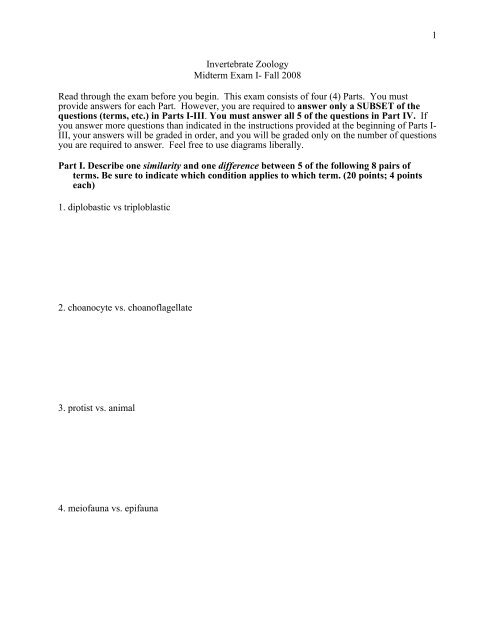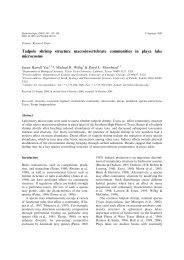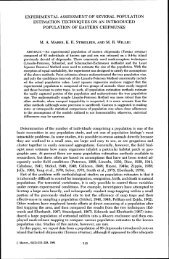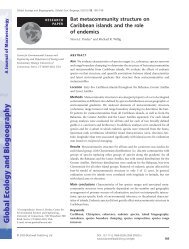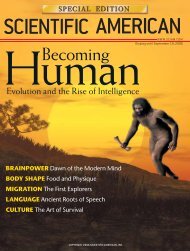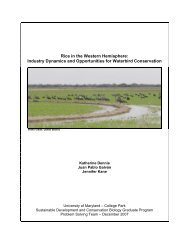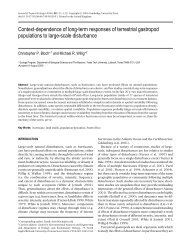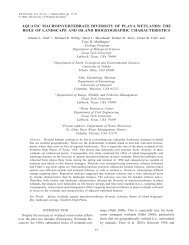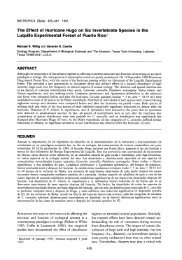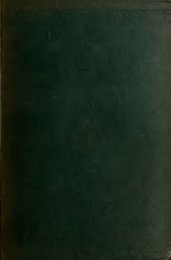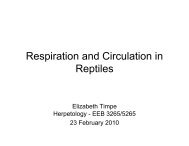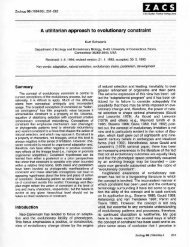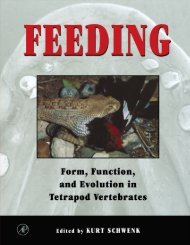1 Invertebrate Zoology Midterm Exam I- Fall 2008 Read through the ...
1 Invertebrate Zoology Midterm Exam I- Fall 2008 Read through the ...
1 Invertebrate Zoology Midterm Exam I- Fall 2008 Read through the ...
Create successful ePaper yourself
Turn your PDF publications into a flip-book with our unique Google optimized e-Paper software.
<strong>Invertebrate</strong> <strong>Zoology</strong><br />
<strong>Midterm</strong> <strong>Exam</strong> I- <strong>Fall</strong> <strong>2008</strong><br />
<strong>Read</strong> <strong>through</strong> <strong>the</strong> exam before you begin. This exam consists of four (4) Parts. You must<br />
provide answers for each Part. However, you are required to answer only a SUBSET of <strong>the</strong><br />
questions (terms, etc.) in Parts I-III. You must answer all 5 of <strong>the</strong> questions in Part IV. If<br />
you answer more questions than indicated in <strong>the</strong> instructions provided at <strong>the</strong> beginning of Parts I-<br />
III, your answers will be graded in order, and you will be graded only on <strong>the</strong> number of questions<br />
you are required to answer. Feel free to use diagrams liberally.<br />
Part I. Describe one similarity and one difference between 5 of <strong>the</strong> following 8 pairs of<br />
terms. Be sure to indicate which condition applies to which term. (20 points; 4 points<br />
each)<br />
1. diplobastic vs triploblastic<br />
2. choanocyte vs. choanoflagellate<br />
3. protist vs. animal<br />
4. meiofauna vs. epifauna<br />
1
5. cnidarian vs. ctenophoran<br />
6. neodermis vs. epidermis<br />
7. asconoid vs. leuconoid<br />
8. acoelomate vs. blastocoelomate<br />
Part II. Answer 6 of <strong>the</strong> following 11 questions (36 points; 6 points each).<br />
1. Identify a synapomorphy for each of <strong>the</strong> following taxa.<br />
a. Cnidaria:<br />
b. Cestoda:<br />
c. Nematoda:<br />
d. Ciliophora:<br />
2
2. Dennis has collected <strong>the</strong> following samples from a diversity of environments. Identify a<br />
phylum of invertebrates, which is consistent with <strong>the</strong> criterion provided, that you might<br />
expect to find represented in each sample.<br />
a. Marine mud; meiofauna __________________________<br />
b. Marine bottom; sessile ___________________________<br />
c. open ocean water column; pelagic _____________________<br />
d. freshwater pond; benthic _____________________________<br />
3. Identify a taxon for which each of <strong>the</strong> following is a synapomorphy.<br />
a. colloblast:<br />
b. neodermis:<br />
c. rhynchocoel:<br />
d. miracidium:<br />
4. Describe <strong>the</strong> digestive system (if any!) in each of <strong>the</strong> following taxa.<br />
a. Entoprocta<br />
b. Nematoda<br />
c. Cestoda<br />
d. "turbellaria" (pick one; but provide at least its common name)<br />
3
5. For each of <strong>the</strong> following phyla, list an organ or structure that is mesodermal in origin.<br />
a. Nematoda<br />
b. Platyhelmin<strong>the</strong>s<br />
c. Loricifera<br />
d. Rotifera<br />
6. Describe <strong>the</strong> function of each of <strong>the</strong> following structures/cell types.<br />
a. mastax in rotifers<br />
b. gastrovascular cavity in Hydra<br />
c. pinacocytes in poriferans<br />
d. adhesive tubes in gastrotrichs<br />
4
7. Describe <strong>the</strong> role (if any!) that undulopodia/cilia play in <strong>the</strong> each of <strong>the</strong> following taxa.<br />
a. Lobosa<br />
b. Parabasalia<br />
c. Rotifera<br />
d. Kinorhyncha<br />
8. Indicate which of <strong>the</strong> following taxa include colonial species by placing YES next to those<br />
that do, and NO next to those that include only solitary taxa.<br />
a. Scyphozoa _______________<br />
b. Entoprocta _______________<br />
c. Rotifera _________________<br />
d. Gnathostomulida _______________<br />
9. List 4 phyla of invertebrates that include more than 10 described species and rank <strong>the</strong>m in<br />
order from 1 <strong>through</strong> 4 based on <strong>the</strong> number of species <strong>the</strong>y are currently thought to include.<br />
(Use 1 for <strong>the</strong> most speciose phylum and 4 for <strong>the</strong> least speciose)<br />
Phylum Diversity Rank<br />
__________________________________ ___________<br />
__________________________________ ___________<br />
__________________________________ ___________<br />
__________________________________ ___________<br />
5
10. a. Describe 3 distinguishing characteristics of a kinorhynch.<br />
b. Where would you expect to find a live kinorhynch?<br />
11. Provide an example of a phylum that includes at least some species that fulfill each of <strong>the</strong><br />
following sets of criteria.<br />
a. animal with biradial symmetry __________________________________<br />
b. diplobastic with tentacles ______________________________________<br />
c. monoecious with ventral cilia __________________________________<br />
d. resides on lobster mouthparts __________________________________<br />
Part III. Answer 6 of <strong>the</strong> following 9 questions about specific invertebrate groups. (24<br />
points; 4 points each)<br />
1. List 3 classes of Cnidaria and for each class indicate whe<strong>the</strong>r a medusoid stage is present in<br />
<strong>the</strong> life-cycle.<br />
a.<br />
b.<br />
c.<br />
6
2. Describe 3 differences between a nematode and a nematomorph.<br />
a.<br />
b.<br />
c.<br />
3. Describe 3 differences between <strong>the</strong> proboscis of a nemertean and that of an acanthocephalan.<br />
a.<br />
b.<br />
c.<br />
4. Describe how an axopodium differs from a reticulopodium.<br />
5. Describe 3 differences between mictic and amictic rotifer females.<br />
a.<br />
b.<br />
c.<br />
7
6. Describe water flow <strong>through</strong> an asconoid sponge.<br />
7. Select a phylum of triploblastic metazoans and describe how <strong>the</strong> majority of its members<br />
handle <strong>the</strong> body functions listed below:<br />
Phylum: ______________________________<br />
a. excretion:<br />
b. digestion:<br />
c. reproduction:<br />
d. locomotion:<br />
8. Describe 3 differences between <strong>the</strong> outer layer(s) of <strong>the</strong> body of a nematode and those of a<br />
monogenean.<br />
a.<br />
b.<br />
c.<br />
8
9. Describe <strong>the</strong> life cycle of Aurelia.<br />
Part IV. Use <strong>the</strong> following list of invertebrate life-cycle stages to answer ALL 5 of <strong>the</strong><br />
questions given below. (20 points; 4 points each)<br />
From <strong>the</strong> above list:<br />
ephyra sporocyst cysticanth<br />
miracidium loricate larva strobila<br />
amphiblastula cydippid larva onchosphere<br />
planula larva cotylocidium cercaria<br />
scyphistoma Mueller’s larva acanthor<br />
acan<strong>the</strong>lla pilidium larva redia<br />
chordoid larva redia J-4<br />
1. Identify 4 life-cycle stages that use cilia (or at least short undulopodia) as <strong>the</strong>ir main mode of<br />
locomotion.<br />
a.<br />
b.<br />
c.<br />
d.<br />
9
2. Identify 4 life-cycle stages that are parasitic.<br />
a.<br />
b.<br />
c.<br />
d.<br />
3. Identify 4 life-cycle stages that are found in only a single phylum (in each case identify that<br />
phylum).<br />
a.<br />
b.<br />
c.<br />
d.<br />
4. Identify 4 life-cycle stages that are produced by sexual reproduction.<br />
a.<br />
b.<br />
c.<br />
d.<br />
5. Identify 4 life-cycle stages that are conspicuously different in form than <strong>the</strong>ir corresponding<br />
adult stage.<br />
a.<br />
b.<br />
c.<br />
d.<br />
10


